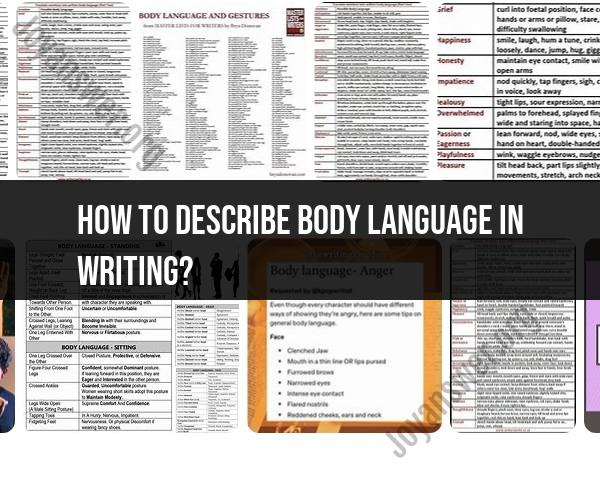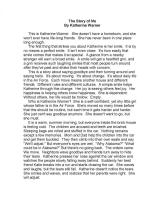How to describe body language in writing?
Describing body language in writing can add depth to your characters and make scenes more vivid. Here are some tips on how to effectively describe body language:
General Tips
- Show, Don’t Tell: Instead of stating emotions outright, show how a character feels through their actions.
- Use Sensory Details: Incorporate sight, sound, touch, and even smell to create a fuller picture.
- Match Actions to Emotions: Ensure the described body language aligns with the character’s emotional state.
Describing Specific Emotions
Happiness
- Smiling: "A broad smile spread across her face, lighting up her eyes."
- Laughing: "He threw his head back and let out a hearty laugh, his shoulders shaking."
Anger
- Tensing Muscles: "His fists clenched at his sides, knuckles turning white."
- Glaring: "She narrowed her eyes, her gaze piercing and intense."
Sadness
- Slumping: "Her shoulders drooped, and she stared at the ground."
- Crying: "Tears welled up in his eyes, spilling over and running down his cheeks."
Nervousness
- Fidgeting: "He tapped his foot incessantly and bit his lower lip."
- Sweating: "She wiped her sweaty palms on her jeans, glancing around nervously."
Confidence
- Posture: "She stood tall, her chin lifted and shoulders back."
- Eye Contact: "He met everyone’s gaze with unwavering confidence."
Fear
- Shaking: "Her hands trembled, and her voice wavered as she spoke."
- Wide Eyes: "His eyes widened, and he took a step back, his breath quickening."
Incorporating Movement
- Entering a Room: "He strode into the room with purposeful steps, his presence commanding attention."
- Gestures: "She waved her hands animatedly as she explained, her enthusiasm evident in every movement."
Subtle Cues
- Microexpressions: "A flicker of doubt crossed his face before he masked it with a smile."
- Small Actions: "She tugged at the hem of her shirt, a small, nervous habit."
Combining Body Language with Dialogue
- Pauses and Beats: "He hesitated, rubbing the back of his neck, before answering."
- Simultaneous Actions: "As she spoke, she drummed her fingers on the table, the rhythm betraying her impatience."
Contextual Cues
- Environment Interaction: "He leaned against the doorframe, his casual stance belying the tension in his jaw."
- Clothing Adjustments: "She smoothed down her skirt, a gesture more for comfort than necessity."
By carefully selecting and describing body language, you can convey complex emotions and add realism to your characters, enhancing the reader's engagement with your story.
What techniques can be used to articulate body language effectively in written form?
While body language itself can't be directly conveyed in written text, there are techniques you can use to evoke the feeling of body language and enhance the emotional impact of your writing:
Action Verbs and Description: Use strong action verbs to describe a character's physical movements and posture. Instead of "She was angry," try "She slammed her fists on the table, her posture rigid with fury."
Dialogue and Tone: Dialogue can hint at body language. Short, clipped sentences can suggest nervousness, while long, flowing sentences might imply confidence. Dialogue tags like "he sighed" or "she chuckled" add nonverbal cues.
Sensory Details: Engage the reader's senses beyond sight. Describe how a character's voice trembles with fear, or how their smile seems strained.
Figurative Language: Similes and metaphors can paint a vivid picture of body language. "He sat slumped in his chair, a deflated balloon," evokes a sense of dejection.
Focus on Emotion: Body language is all about expressing emotions. Describe the emotions your characters are feeling, and then choose words that reflect those emotions in their physicality.
Remember, the key is to show, not tell. By using these techniques, you can create a stronger sense of your characters and their interactions, even without explicitly mentioning body language.













